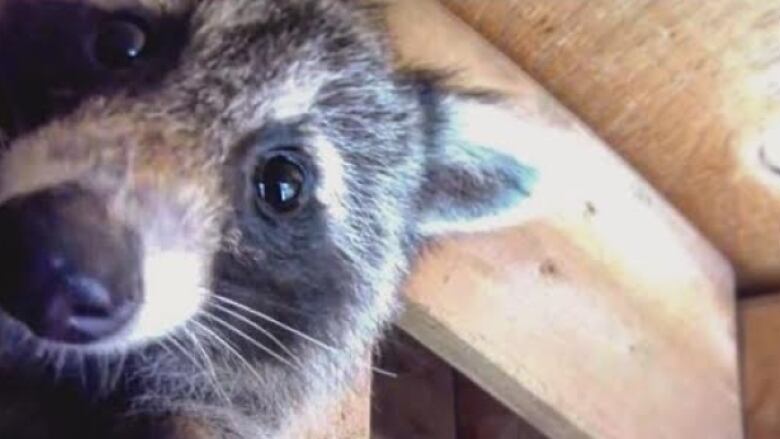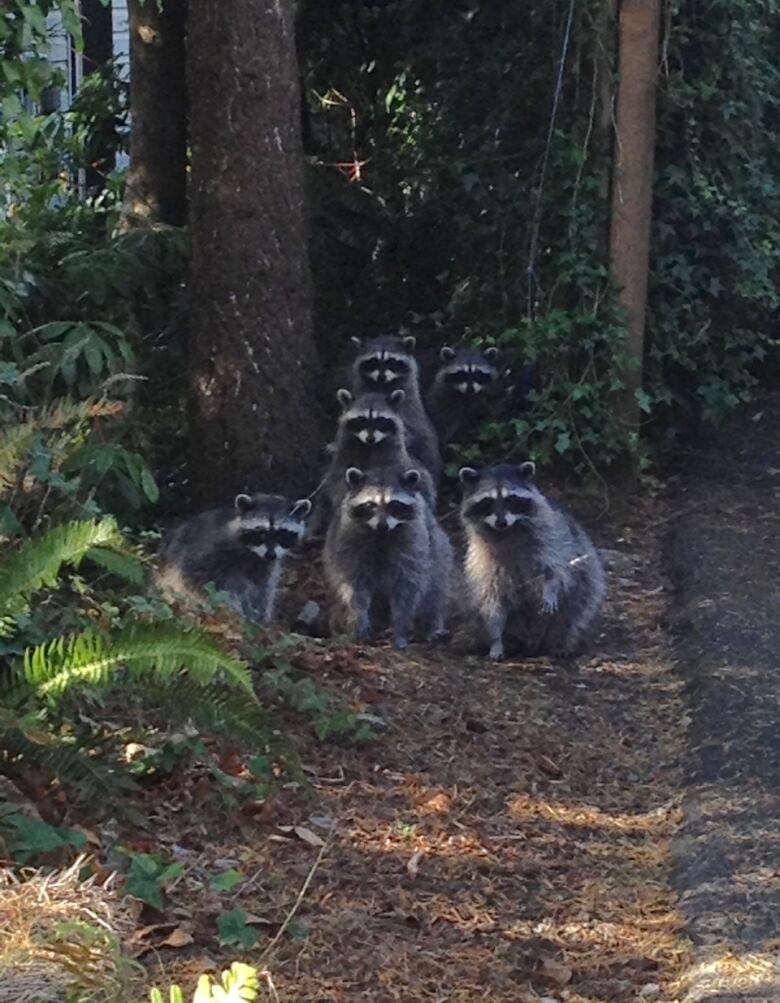Wildlife group accuses province of rabies 'fear mongering' and wasting millions
Ontario Wildlife Coalition accuses province of 'fear mongering,' but ministry says it's a 'world leader'

A provincial wildlife group alleges the province is "fear mongering" overthe dangers of rabies in Ontario, and is wasting millions of dollars in public funds on its program to fight the virus.
The province has spent $8.6 million overthe last three years on rabies control, andmaintains it ismanaging asuccessful program that has containedsouthern Ontario's current raccoon rabies outbreak.
One expert says the program costs relatively little, considering the money goes towardfightingan almost invariably fatal disease.
But the Ontario Wildlife Coalition (OWC)a group that focuses on policy issues and advocating onbehalfof wildlifesays the Ministry of Natural Resources and Forestry is just lookingto "keep funding flowing," and not actually solvea problem.
The group argues rabies isn't a widespread risk, and there are cheaper ways to control the virus.
The province, by contrast, says rabiesisn't a widespread problem because its program is so effective.
In a letter sent to the ministry and the heads of Ontario's political parties obtained by CBC News, the OWC says it is "urging" the province to take a close look at the current rabies program and itscosts.
"There's a lot of money being spent and very little accountability," said Donna DuBreuil, President of the Ottawa-Carleton Wildlife Centre, and member of the OWC.
"There needs to be more oversight in terms of this ministry."
For years, southern Ontario had been virtually rabies-free. Then back in 2015, a dog named "Mr. Satan" got into a brawl with an aggressive raccoon in the back of a Hamilton animal control van.
The baiting programs are hugely costly, and you have to wonder what kind of effect they're actuallyhaving.-DonnaDuBreuil, President of the Ottawa-Carleton Wildlife Centre
That raccoon tested positive for thevirus, marking the first documented case of raccoon rabies in the province since 2006, which ballooned into the first widespread outbreak since 1999.
The province then started an aggressive aerial and ground baiting vaccine programin an attempt to quell the spread of the virus in wildlife populations.
TheOWCarguesforboth economic and health reasons,it makes more sense to focus onvaccinatingpets and livestock thanspend millions on programs that target far less accessible wildlife through expensive aerial and ground baiting.
"The baiting programs are hugely costly, and you have to wonder what kind of effect they're actually having,"DuBreuilsaid.
But Ministry spokespersonJolantaKowalskitold CBC News in an email that the program has been highly effective.
"If no control actions were taken, it is predicted that rabies would have spread beyond Toronto and London by the end of 2017, and past Barrie, Peterborough and Chatham by the end of 2018," she said.
A multi-million dollar fight
The province says it spent $600,000 on fighting rabies in Ontario in the 2015/2016 fiscal year, followed by $4.3 million in 2016/2017, and $3.7 million in2017/2018.
When compared to numbers in nearby New York State which frequently leads the U.S.in reportednumbers of rabid animalsOntario appears to spend much more on itsrabies program,theOWCsays in its letter.
According to a report from NPR member station WRVO, New York State lawmakers allocated about $772,770 for rabies prevention and research efforts in 2016, as well as an additional $150,000 to help local governments pay for treatment if someone is bitten by a rabid animal.
In its correspondence to the province, the OWCsays a small "but determined" group of wildlife managers have made rabies a thriving "industry," despite "its virtual non-risk" in North America.
"The 'industry' is made up of government scientists, academics, vaccine and bait manufacturers and trappers who have grown dependent on public funds," the letter says.

But the ministry maintains that it's not that simple. In the U.S., the federal government is responsible for rabies elimination and control individual states don't lead rabies elimination programs.
"So unlike Ontario, New York State has rabiesthroughout the entire stateand isn't currently trying to eliminate it,"Kowalskisaid. "New York State regularly documents 400500 cases of rabies per year. The costs will be ongoing for years to come."
Scott Weese, a professor and infectious disease specialist at the Ontario Veterinary College at the University of Guelph, told CBC News that it's difficult to compare Ontario with New York state, as the public health system in the U.S. "isn't exactly flush with cash."
Ontario also has the advantage of the Great Lakes blocking direct access from many states, forcing rabid animals to sneak across more narrow corridors, Weesesaid. For New York State to attempt what Ontario is doing, it would need all adjacent states to commit to a similar program.
"They're not really in a situation where they could do good eradication unless they convinced all the states that are physically connected to them to do it," Weese said. "We've got that advantage."
Human rabies deaths exceptionally rare
It's tough to discount the seriousness of the rabies virus itself. Most infected humanswho show symptoms don't survive, and those who do usually suffer severe neurological damage.In most parts of Ontario, cats and dogs have to be vaccinated for rabies by the time they're three months old, and then given booster shots every one to three years.
But human cases of rabies are exceptionally rare in Canada somethingthe federal government saysis"largely due to excellent prevention and control programs." Since reporting started in 1924, 25 people in six provinces have died of rabies, with seven of those deaths coming in Ontario. The last death on record inOntario came in 2012, but that person was exposed to the virus while outside of the country.
The last death in Canada that was caused by an infection that occurred in this country was an Alberta man who died after he was bitten by a rabid bat in 2007.

Weesesays the idea of scaling down rabies spending is an issue that often rears it head with infection control, where "success breeds complacency."
"So if you have a successful program [and] you don't see the disease, people start paying less attention to itand saying, 'Why are we spending all this money on rabies, because it doesn't kill people in Canada,'" he said.
"Well maybe it doesn't kill people in Canada because we have a good control program."
Finding room for public consultation
The OWCalso takes issuewith repeated "exemption orders" provided for the rabies program under the province'senvironmental assessment act, which removes aspects of public consultation from the process. They have been in place since 2002.
"Why would the Minister need such an order?" the group's letter reads. "Why would the Minister not welcome public comment and even a public challenge to the rabies programme given the skyrocketing costs and controversial nature of the previous programme?"
The province says those orders are contingenton factors like the success of the program, and notifying the public in the area where baiting is taking place. The ministry alsopublicly postsits annual rabies control plans on the environmental registry,Kowalskisaid.
Weese said the province has beenbeen "engaging relevant experts in the field," but he doesn't know how far that should go in terms of consulting the public when time is a factor.
"You can't say, ok we've got raccoon rabies in Hamilton, we're going to do a six-month review to see what we should do you need to do things quickly with infectious diseases or you miss your window of opportunity."
Corrections
- This story originally stated the province spent $12.3 million on rabies programs in three years. In actuality, it spent $8.6 million.May 01, 2018 4:58 PM ET












_(720p).jpg)


 OFFICIAL HD MUSIC VIDEO.jpg)
.jpg)



























































































